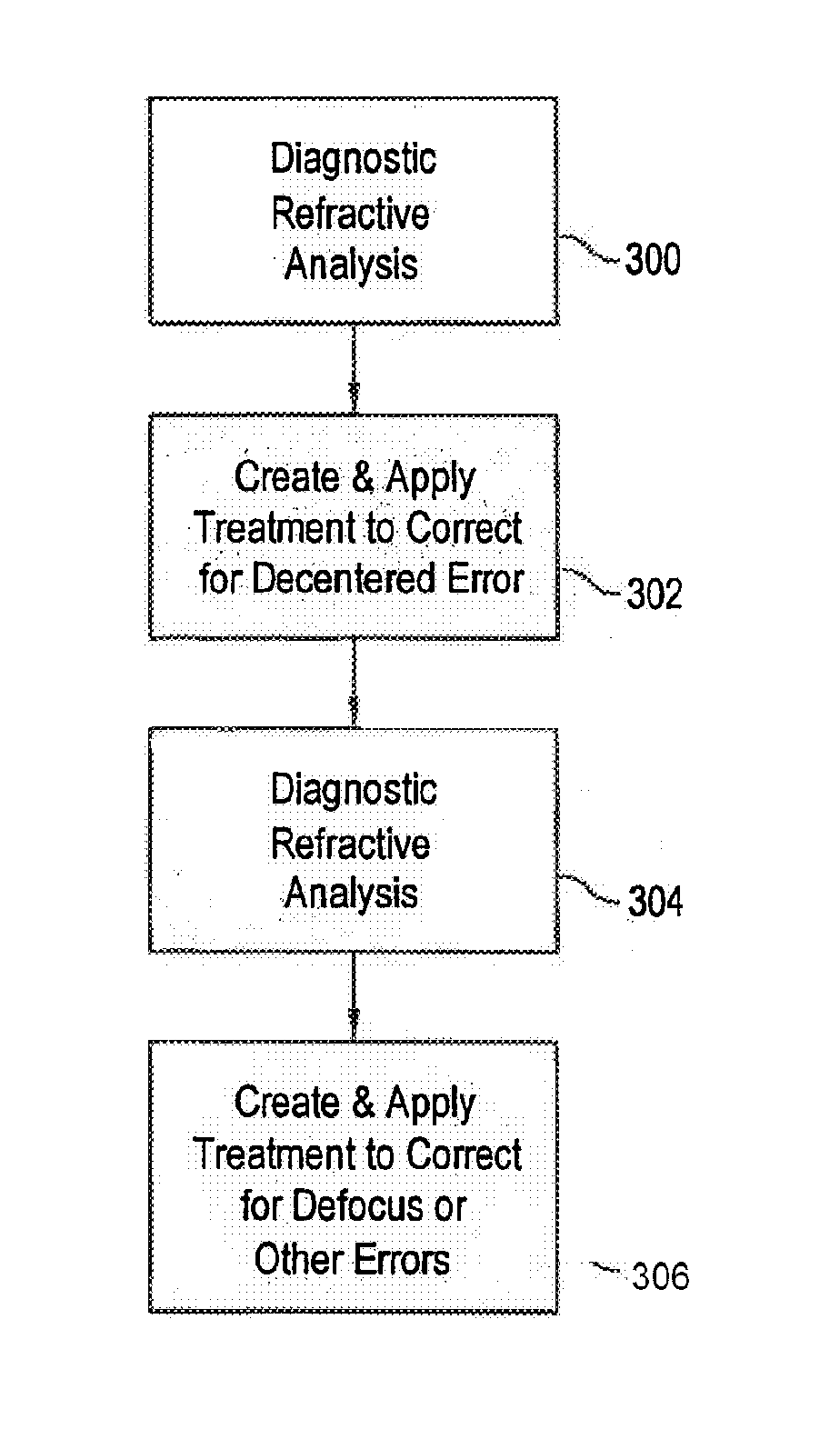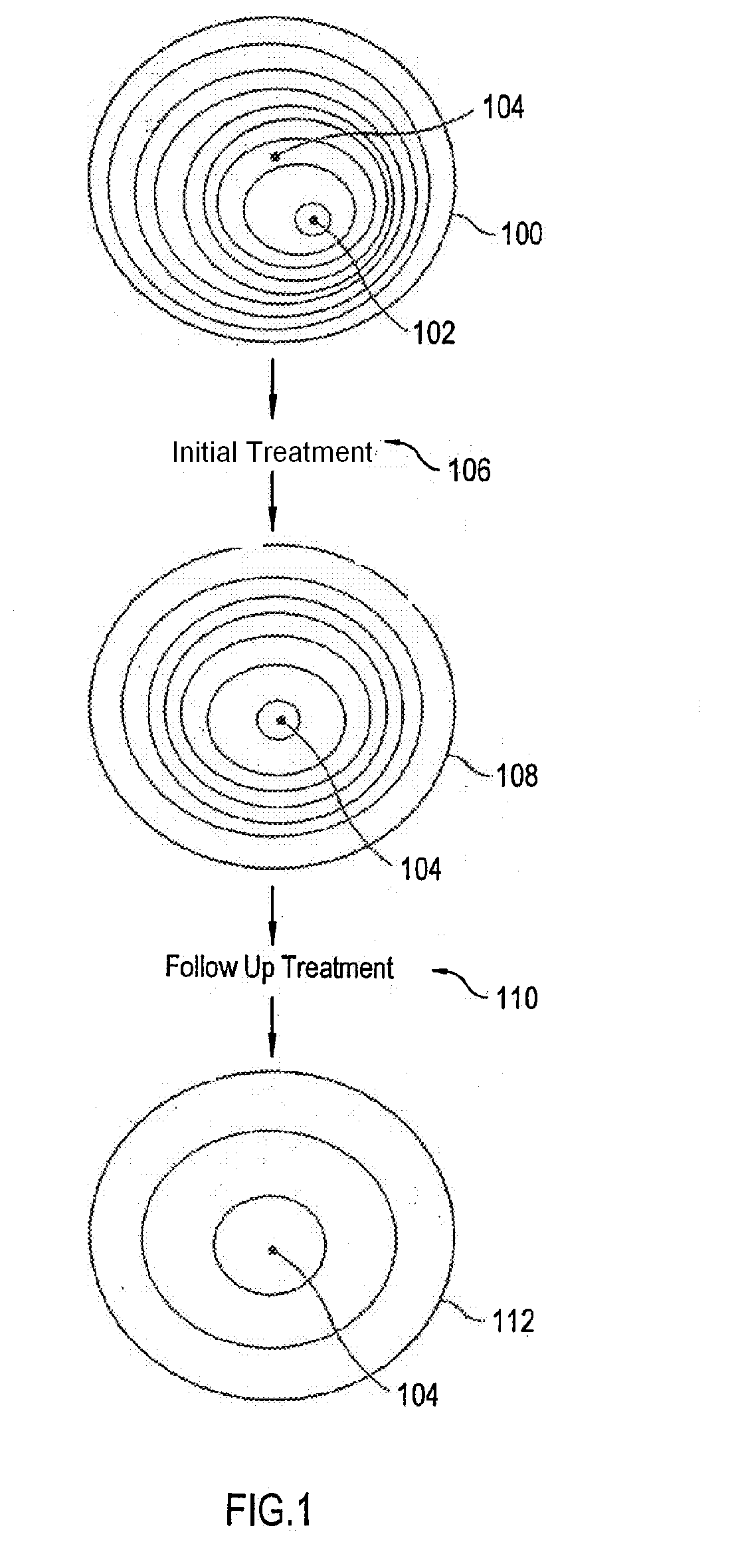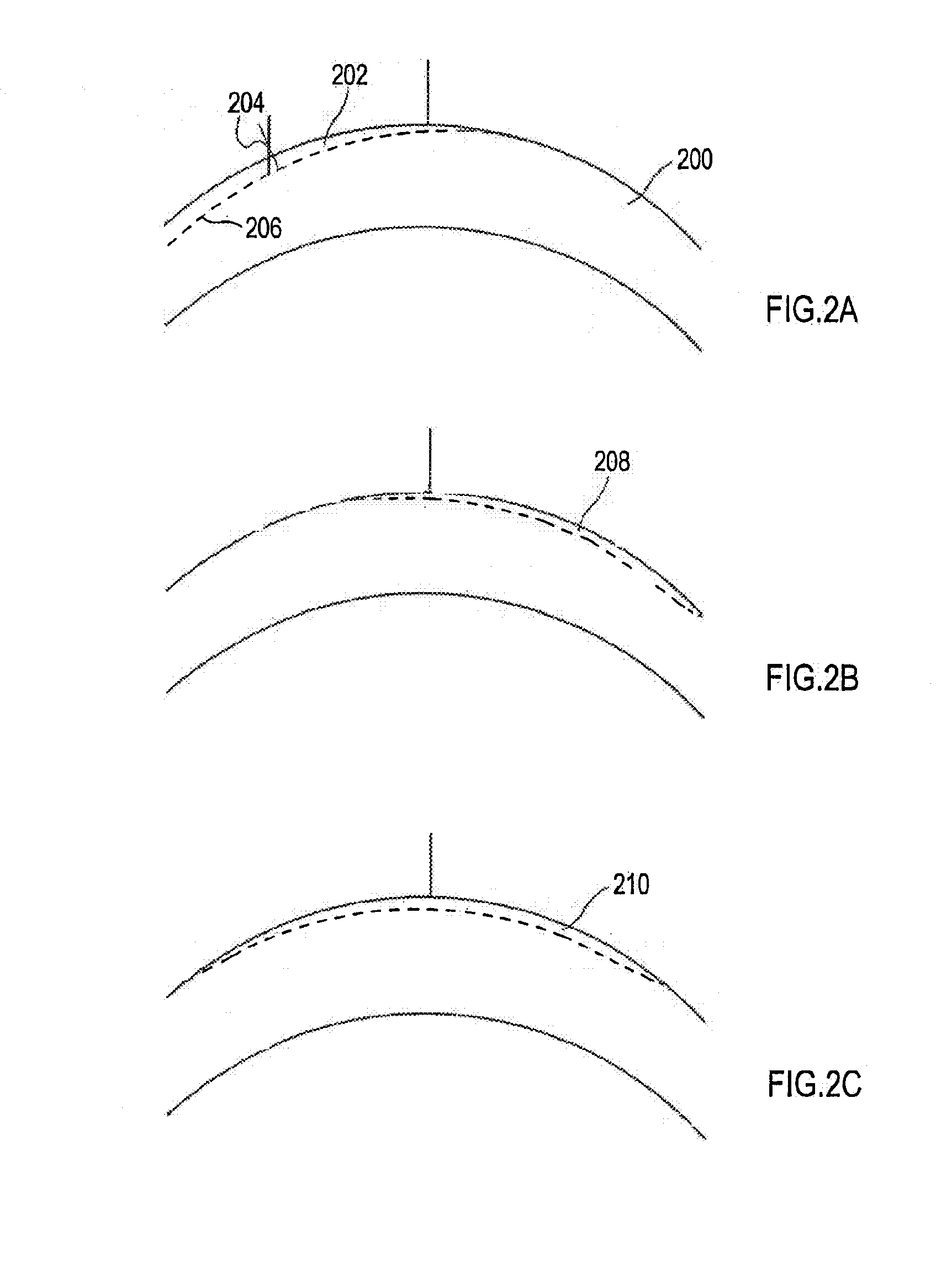Method and Apparatus for Multi-Step Correction of Ophthalmic Refractive Errors
a multi-step, refractive error technology, applied in the field of refractive correction systems, can solve problems such as difficult calculation, corneal reshaping, and calculation of treatment profiles which do not necessarily fully correct vision
- Summary
- Abstract
- Description
- Claims
- Application Information
AI Technical Summary
Benefits of technology
Problems solved by technology
Method used
Image
Examples
Embodiment Construction
[0015]Turning to FIG. 1, illustrated are the steps of one technique implemented according to the invention. Generally, one of a variety of techniques, preferably topographically based, but including others as described below, determines the refractive error profile of the eye. Based on that error, a corresponding partial refractive treatment is then calculated that is sufficient to generally “re-center” and / or symmetrize the remaining refractive error. The treatment is applied, and the remaining refractive error profile of the eye is again measured. Based on this remaining error, a second treatment is calculated and applied to the eye. The initial treatment thus performs the bulk of the decentered off axis, or asymmetric correction, and the subsequent treatment is substantially symmetric.
[0016]Referring to FIG. 1, shown is a representation of a refractive profile 100 of a typical eye which can be treated according to this technique. As shown, it includes a refractive error that has ...
PUM
 Login to View More
Login to View More Abstract
Description
Claims
Application Information
 Login to View More
Login to View More - R&D
- Intellectual Property
- Life Sciences
- Materials
- Tech Scout
- Unparalleled Data Quality
- Higher Quality Content
- 60% Fewer Hallucinations
Browse by: Latest US Patents, China's latest patents, Technical Efficacy Thesaurus, Application Domain, Technology Topic, Popular Technical Reports.
© 2025 PatSnap. All rights reserved.Legal|Privacy policy|Modern Slavery Act Transparency Statement|Sitemap|About US| Contact US: help@patsnap.com



